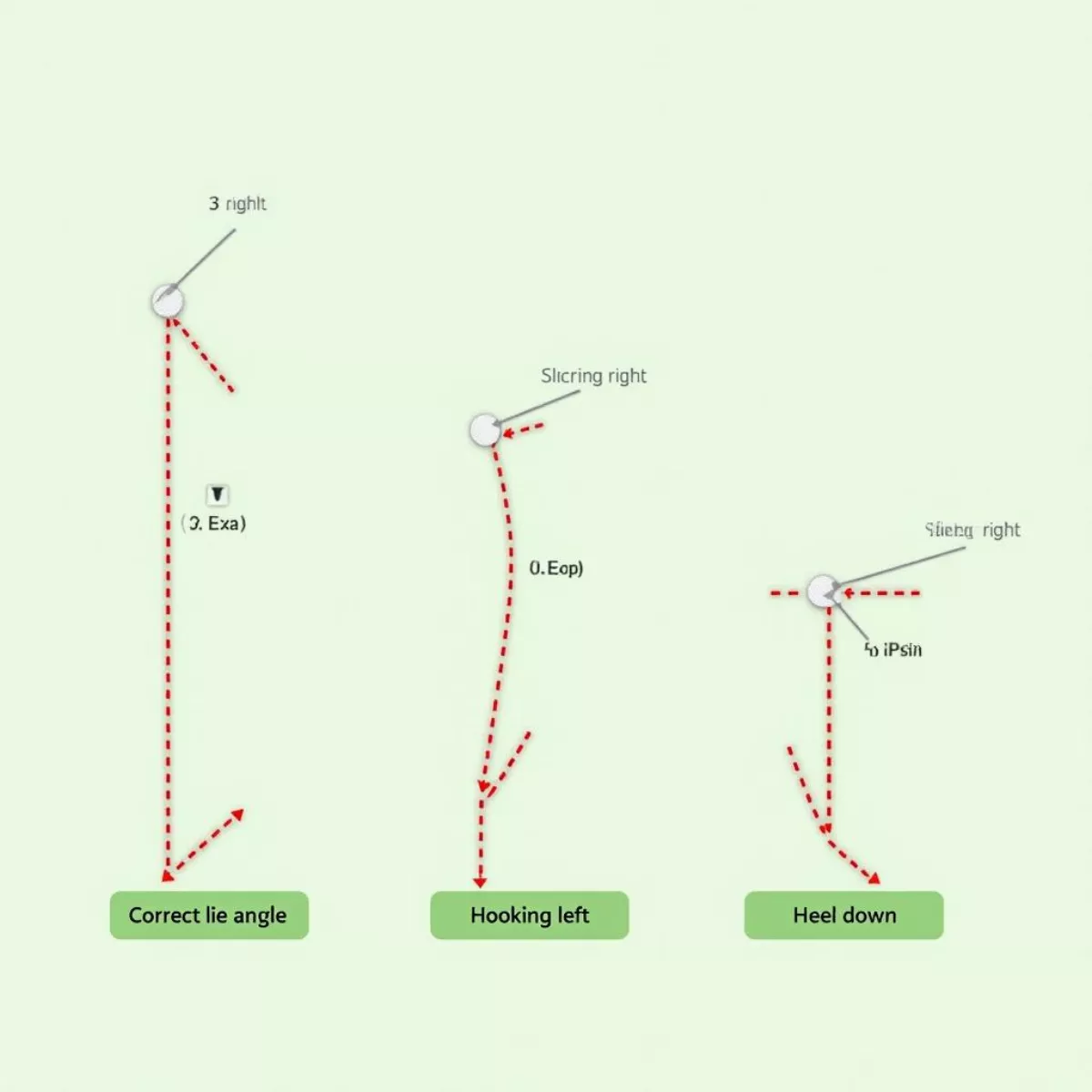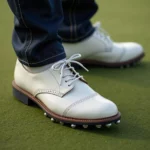If you’re looking to up your game on the golf course, understanding the lie angle of your clubs is essential. Have you ever wondered how that small angle could impact your shots? Well, you’ve landed in the right spot! In this guide, we’ll delve into what lie angle is, why it matters, and how to choose the right one for your game.
What is Lie Angle?
The lie angle refers to the angle formed between the shaft of the club and the ground when the club is resting in its normal playing position. It’s a crucial specification that can influence how well a player strikes the ball, accuracy, and overall success in golf.
- Importance of Lie Angle: The lie angle affects the direction and trajectory of your shots. A correct lie angle ensures that the sole of the club is flat against the ground at impact. If your lie angle is incorrect, the toe or heel of the club may dig into the ground, resulting in poor shots.
Understanding the Basics
- Standard Lie Angles: Clubs come with standard lie angles, which vary with club type (drivers, irons) and manufacturers. These angles usually range from 56 to 64 degrees for irons, while drivers have a lower angle.
- Adjustability: Many modern golf clubs come with adjustable hosels, allowing players to tweak the lie angle to fit their swing style more closely.
How to Measure Lie Angle
- Static Measurement:
- Hold the club upright on a flat surface.
- The angle can be measured using a protractor.
- Dynamic Measurement:
- A more reliable method involves hitting balls and observing where they land.
- Visit a professional fitting center for precise assessments.
 Measuring lie angle of a golf club
Measuring lie angle of a golf club
Why Does Lie Angle Matter?
Understanding the importance of lie angle can drastically improve your game. Here are a few ways it can make a difference:
Improved Accuracy
If your lie angle scenario isn’t suited to your height and swing, you might notice:
- Pulls: When the toe of the club is too high at impact, the ball may hook or pull to the left.
- Slices: If the heel is elevated, the ball can slice or veer to the right.
 Golf ball flight paths based on lie angle
Golf ball flight paths based on lie angle
Enhanced Consistency
A proper lie angle promotes more accurate shots, allowing you to:
- Create a repeatable swing.
- Develop muscle memory, resulting in reliable shotmaking.
Increasing Comfort
The right lie angle can make a difference in how comfortable you feel when you swing. You’ll find:
- A more natural posture.
- Less strain on your body.
Determining the Right Lie Angle
Finding the correct lie angle is a blend of:
- Height: Taller players often require a flatter angle.
- Posture: How you stand and grip influences the required lie angle.
- Swing Style: A steeper swing path may require a different lie angle than a flatter swing.
Common Lie Angles Based on Height
| Height | Recommended Lie Angle for Irons |
|---|---|
| Under 5’3″ | 2° flat |
| 5’4″ to 5’6″ | Standard |
| 5’7″ to 6’0″ | Standard to 2° upright |
| Over 6’1″ | 2° to 4° upright |
Tip: Always consult with a professional or utilize fitting resources before deciding on your lie angle.
How to Adjust Lie Angle
If you discover your current clubs have the wrong lie angle, here are options for adjustment:
- Bending the Clubs: Most forged irons can be adjusted by skilled club fitters.
- Replacing Shafts: Sometimes, a new shaft with the correct specifications can help.
 Golfer getting fitted for clubs
Golfer getting fitted for clubs
Effects of Incorrect Lie Angle
Using clubs with an incorrect lie angle can lead to various issues during your game, such as:
- Inconsistent Ball Flight: Difficulty in controlling the ball’s trajectory.
- Loss of Distance: Shots may end up shorter due to mishits.
- Strain: An unsuitable lie can cause discomfort, even leading to injury over time.
Maintenance Tips for Lie Angle
Maintaining your clubs is essential to ensure they perform well. Here are a few tips:
- Check Lie Angles Regularly: After extended use or significant swing changes, revisit your lie angle.
- Professional Fitting: Consider getting a professional fitting every year or two to keep up with any swing changes.
- Store Properly: Keep your clubs in a dry environment to prevent warping or damage to the shaft.
Key Takeaways
- Understanding lie angle is crucial to improve accuracy, consistency, and comfort in your game.
- Proper fitting based on your height and swing style can lead to more reliable shots.
- Regular checks for lie angles can enhance your performance and prevent strain.
FAQ Section
1. What is the standard lie angle for golf clubs?
The standard lie angle generally varies by club type. Irons typically range from 56 to 64 degrees.
2. How does lie angle affect my ball flight?
An incorrect lie angle can cause pulls or slices in your shots, impacting both direction and distance.
3. How can I tell if my lie angle is wrong?
If you notice consistent difficulties in your ball flight or feel discomfort when swinging, your lie angle may be an issue.
4. Can I adjust the lie angle myself?
While some DIY adjustments might be tempting, it is usually best to consult a professional to avoid damaging your clubs.
5. How often should I check my lie angle?
It’s advisable to check your lie angle after any significant changes in posture, swing style, or after extended use.
6. Are adjustable clubs worth it?
Yes, adjustable clubs provide flexibility and can help fit your evolving swing as you improve your game.
7. What tools do I need to measure lie angle?
You can measure lie angle with a protractor, another club for comparison, and a flat surface.
8. Why is lie angle important for putting?
While putting primarily relies on the stroke and setup, having the correct lie angle ensures that the putter face remains square at impact.
9. Does lie angle differ for woods and hybrids?
Yes, woods typically have lower lie angles than irons. Standard adjustments can be made based on the player’s specifications.
10. How can I find a professional fitting near me?
Search for local golf courses or pro shops that offer fitting services, or check manufacturer websites for recommended fitting centers.
In conclusion, understanding lie angle is key to elevating your golf game. Whether you’re a beginner or an experienced player, the right lie angle can lead to improved performance and more enjoyment on the course. Remember to keep these tips in mind and consider having your clubs professionally fitted for optimal results!

